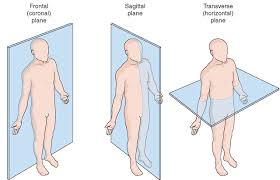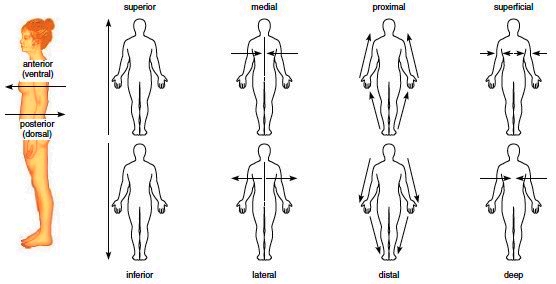Anatomical Positions
The body supposed to be in erect posture with arms hanging by sides and the palms of hands are directed forward.There are two body positions which are prone and supine positions.
- prone position- body is lying with face down.
- supine position - body is lying on plane with face up.
 |
| Figure 1.0 The body position |
Anatomical Planes
 |
| Figure 1.2 Body planes |
Plane
|
Definitions
|
Frontal or coronal plane (“crown”)
|
v It
is perpendicular to median plane.
v Divides
the whole body into the front and back halves of body.
|
Transverse
|
v Divide
the body into upper (superior) and lower (inferior) parts
|
Sagittal
|
v It
divides body into left and right parts
v Mid-sagittal
plan (median plane), pass through midline and divide body into left and right
parts.
v Parasagittal,
off to one side and divide body into unequal right and left parts
|
Table 1.0 Body planes and definition
Anatomical Directions
Directional terms describe the positions of one structure or part of the body relative to another part or structure of body. directional terms can be describe as shown figure shown below.
 |
| Figure 1.3 Body directions. |
Term
|
Definition
|
Anterior or ventral
|
Nearer to front of the body or toward
the front
|
Posterior or dorsal
|
After, behind or toward the back
|
Inferior or caudal
|
Below or at a lower level
|
Proximal
|
Closer to the origin
|
Distal
|
Away from the center of body
|
Medial
|
Toward the mid-line of body
|
Ipsilateral
|
On the same side of body
|
Deep
|
Away from surface of body
|
Superficial
|
Toward
or at the body surface
|
Intermediate
|
Between two structure
|
Table 1.1 Directional terms and explanation

